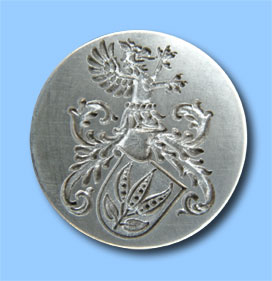
Olaf Schotenröhr.
About the Seal A
seal is the impression of a deepened side-inverted engraved stamp, |
 |
Signet
engraved side-inverted deepened in silver. Olaf Schotenröhr. |
The precautions and safety precautions,
connected with the laborious, |
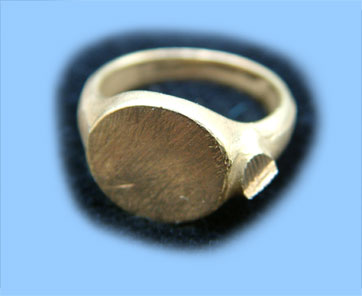 |
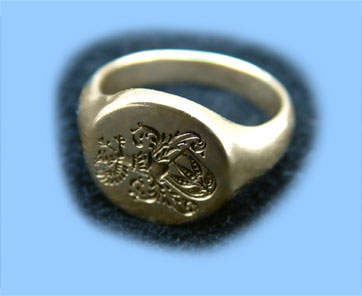 |
| Blank signet ring direktly after cast | Signet ring polished and engraved |
| Each
nobleman or knight had at his waistbelt a leather tape with a short seal stick, to be able for sealing (sign!) at any time. For the safe keeping of the large royal seals or official seals one created especially the high office of the Lord Privy Seal, it was e.g. in England the lord chancellors, in France of the "guard de sceaux" (today Ministers of Justice), in Germany to 1806 the Kurfürst (elector) of Mainz. In order to avoid abuse with it and in this case unpredictable consequences, any counterfeiters were been frightened with draconian punishments (z. B. in a case cooking in an oil-fired boiler). |
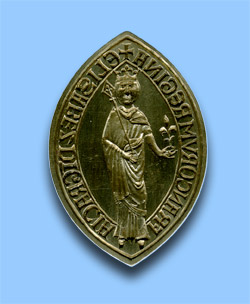
|
Signet
of the french Queen Elisabeth engraved manually as historic seal-engravers did. Click on image to enlarge. |
GGood
seal cutters were rare, therefore highly outstanding people, |
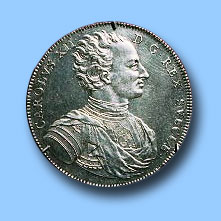 |
Karl
XII - 1 Riksdaler 1718 Engraved by Johan Carl Hedlinger. |
| His
motto read "lagom" (not too much, not too little). Hedlinger was
a typical contemporary of one of the glamourousest periods of history: turned, speak-well-informed, even in the use of a sword not inexperienced and naturally before everything a hardly over-bidding a master of his trade. It gave some such expert also of low birth. Who however once had acquired the admiration-worthy ability to such work, did not need to falsify, therefore it will hardly have given seal counterfeiter (who wants to be simmered?). If a seal was lost, it immediately was declared invalid. If a seal was expressed in a person (not office), it was normally destroyed in public after death and given also to the grave. Today castings of seals in wax or sealing wax are used more for decorative purposes. More frequently one uses the colorless relief paper embossing seals, here paper or cardboard is stamped into the deepened seal engraving by a press. In addition one needs a poitive stencil. By the way everyone, which sends letters or packages away with insured contents of higher value, should have a seal, signet or signet ring. |

|
Seal
of Pope John Paul II. |